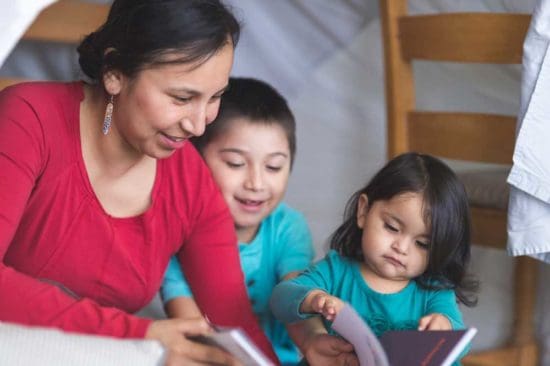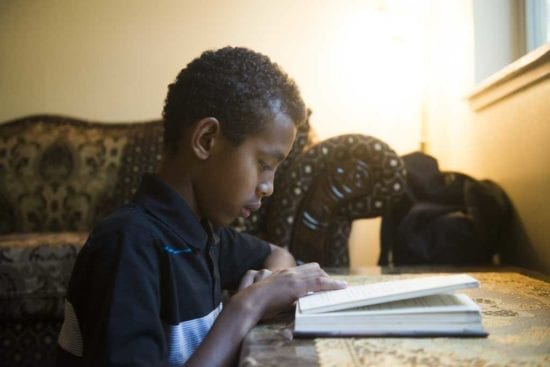什么是公立学校?
公立学校为美国儿童提供免费教育。 政府利用地方税收、州政府资金和联邦资源支付这些项目的费用。
任何孩子都可以上公立学校。 在美国各地的公立学校里,有来自不同文化背景的孩子,他们说着多种不同的语言。 您不必是美国公民或永久居民,您的孩子也可以上公立学校。
公立学校级别
公立学校分为从幼儿园到十二年级的不同年级。 儿童通常从 5 岁左右开始上学,到 18 岁左右结束学业。
小学(5 至 10 岁)
在小学,孩子们学习阅读、写作和数学等基础知识。
初中(11 至 13 岁)
小学之后是初中。 在这里,孩子们不仅能学到更多数学、科学和历史知识,还能探索美术和音乐等其他学科。 他们还学会了如何更好地学习和组织工作。
高中(14 至 18 岁)
高中是学生为未来做好准备的地方。 他们学习数学和历史等难度较大的课程。 他们还可以选择自己感兴趣的课程,为上大学或就业做准备。
| 各州对法律规定的孩子入学年龄有不同的规定。 |
为您的孩子报名
您居住的地方不同,为孩子报名上学的规定也可能不同。 首先,您要弄清楚您居住的社区有哪些学校。 然后,您需要收集所需的文件,如居住证明和健康记录,并联系学校。
了解有关为孩子报名的更多信息。
在新学校开始上学的技巧开办新学校的技巧
- 如果您的孩子在学习英语方面需要帮助,请询问学校能提供哪些帮助。
- 尽量在欢迎日等活动期间参观学校,或要求与孩子一起参观学校。
- 询问孩子可以参加的俱乐部或体育活动。 这是交朋友的好方法。
| 如果您不会说英语,请询问学校是否有翻译。 您还可以使用一些应用程序和工具来帮助您与孩子学校的教职员工沟通。 了解更多信息。 |
课程设置
课程 "一词是指公立学校教授的一系列科目和信息。 公立学校的课程因地而异。
主题通常包括
- 英语语言艺术:阅读、写作
- 数学:算术、代数、几何、统计
- 科学:生物、化学、物理、地球科学
- 艺术:视觉艺术、音乐、表演艺术
- 体育与健身
- 技术和计算机科学
- 健康:身体和心理健康
- 外语
值得注意的是,这些标准会因年级、学区、州和现行标准的不同而有所差异。
年级
学校用分数给学生的课堂表现打分。 成绩可以根据课堂参与、家庭作业、项目和考试等来评定。 成绩可以显示学生的知识水平。 他们可以帮助确定学生是否可以选修高级课程或是否需要额外帮助。
成绩通常用字母(A、B、C、D、F)或数字(90、80、70)表示。 A "为最高分,"F "表示学生不及格。
有些学校使用平均学分绩点(GPA)系统和字母等级。 GPA 计算的是学生在特定时期(如一学期或一学年)的学习成绩。 年龄较小的学生可能会得到其他的分数,而不是仅仅说明孩子是否达到了年龄标准。
注:在美国,"等级 "一词有两种含义。 它可以指学生的分数或在校表现,也可以指孩子所在的年级,如 "一年级 "或 "二年级"。
标准化测试
美国学生定期参加标准化考试,这与他们在平时上课时参加的考试不同。 标准化测试的设计方式相同,在相同条件下对所有学校进行测试。 它们有助于衡量学生和学校的表现。
随着孩子年龄的增长和考虑上大学,他们还可能参加 SAT 或 ACT 等专业考试。 这些测试对进入大学非常重要。
学校膳食
大多数学校都允许您选择学校提供的膳食或您的孩子自带食物作为午餐。 学校提供的膳食通常需要付费。
无钱支付膳食的家庭可以获得免费或低价膳食。 有些学校还为低收入家庭提供免费早餐计划。 您可以向学校或学区提交申请,以供审核。 请联系学校工作人员了解更多信息。
学校开支
美国公立学校对您的孩子是免费的,但家庭仍需支付其他费用,这些费用可能包括
- 学校午餐,如上所述。
- 学习用品,如笔记本、笔和书包。
- 特殊项目,如体育或课后艺术。
- 实地考察,如博物馆和公园。
- 校服或特定服装。
许多学校和地方组织都会帮助学生支付与学校相关的费用。 不要害怕询问学校办公室有哪些选择。 他们就是来帮助处理这样的事情的。
学生权利和法律
对于初到美国的家庭来说,了解学生在公立学校享有的权利非常重要。 这些权利包括
- 您的孩子不能因为种族、肤色、国籍、性取向、残疾、宗教或身份而受到不同的待遇。
- 如果您的孩子不会说英语,他们有权获得免费的语言帮助。
- 您的孩子有权在学校自由表达和实践自己的信仰,包括有权穿着宗教服装。
- 您的孩子享有隐私权。 学校不得询问学生的移民身份。
美国儿童必须上学。 这就是法律。 家长必须确保孩子按时上学。 如果您不这样做,可能会产生法律后果,具体取决于您所居住的州。
了解有关学生权利和法律的更多信息。
支持您的孩子
孩子在学校的成功包括父母和看护人的支持。 以下是您可以帮助他们做好的几件事:
- 阅读学校电子邮件,查看学校网站等其他资源,了解孩子的学习情况和学校发生的事情。
- 向孩子的老师、学校办公室和校长提问。 有时,发送电子邮件是给他们时间回答的好方法。
- 与孩子报到 询问他们正在学习什么,并提供帮助。
- 了解孩子的家庭作业和课堂要求。
- 报名参加学校的家长活动。
- 阅读并签署家长通知书。
- 审查校规和行为准则。
了解更多支持孩子的信息。
(https://www.youtube.com/watch?v=cbjxdPncdEs)
学校工作人员和教师
学校有不同的教职员工帮助您的孩子学习和获得支持。
- 教师负责他们的日常教育。
- 校长负责监督整个学校,处理教师以外的问题。
- 指导顾问提供学术和个人支持。
- 前台工作人员可帮助解决注册和一般问题。
- ESL (英语作为第二语言)专家帮助英语语言学习者提高英语技能。
进一步了解工作人员和教师的作用。
课外活动
课外活动是指您的孩子可以在学校参加的不属于正常课程的特殊俱乐部或小组。 这些活动通常是免费的,在课前或课后进行。 这些活动是您的孩子学习新知识、结交朋友和感受新社区的好方法。
每所学校的情况不同,但一些课外活动可以包括
- 足球或篮球等体育运动
- 国际象棋、戏剧或艺术等不同爱好的俱乐部
- 学生会帮助学校决策
- 社区服务,帮助您所在地区的人们
- 拼字比赛或数学挑战赛等学术竞赛
- 音乐和艺术,如乐队或戏剧
- 为校报或年鉴工作
- 庆祝不同文化的俱乐部
- 学习领导力的计划
参加这些活动可以在很多方面帮助孩子成长,而不仅仅是在学校科目方面。 在申请大学或工作时,这也是一个展示不同才能和兴趣的好机会。
大学和职业准备
高中为准备毕业后生活的学生提供支持。 辅导员可以与学生讨论大学、职业学校和学徒等选择。 学校还提供课程、讲习班和实习机会,以传授实用技能和提供实际生活经验。
职业招聘会和大学参观让学生了解各种选择。 这些活动有助于他们做出更明智的决定。 您应该尽早开始这些对话,并利用现有资源。
学校安全
学校把每个人的安全放在首位。 他们制定了计划并进行了演练,知道在火灾或其他危险情况等紧急情况下该怎么做。 有些学校安装了监控摄像头并检查身份证,以确保只有正确的人才能进入。
此外,学校还负责解决学生之间的欺凌等问题。 重要的是要了解学校的安全计划,并在您有疑虑时与学校教职员工进行交流。
其他类型的学校
除了公立学校,还有其他教育选择。
私立学校是一种具有明显优势的选择,但也要付出代价。 以下是您应该考虑的问题:
- 必须缴纳学费。
- 收入有限的家庭可获得奖学金。
特许学校从公共机构获得资金。 他们的运作也更加独立。 要点包括
- 由纳税人提供资金,但却自行运行。
- 招生人数可能有限,因此候补名单很常见。
- 课程和运作的灵活性。
家庭教育提供了最个性化的教育体验,由家长或辅导老师主导。 以下是主要细节:
- 家长或辅导员在家授课。
- 家长必须遵守各州的具体规定。
- 教材(如教科书和软件)需要投资。
本页信息来自 U.S. Department of Education 和其他可信来源。 我们的目标是提供简单易懂、定期更新的信息。 本信息并非法律建议。


